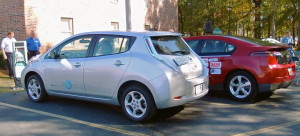 Recently, the number of legislative policies aimed at curbing detrimental emissions has increased. This is to make sure that there is cleaner air and less environmental damage in future caused by vehicle emissions. Similarly, huge efforts have been directed towards minimizing the dependence on declining oil reserves. These dynamics are a clear indication of a move from automobiles utilizing combustion engines towards utilization of electric and hybrid cars.
Recently, the number of legislative policies aimed at curbing detrimental emissions has increased. This is to make sure that there is cleaner air and less environmental damage in future caused by vehicle emissions. Similarly, huge efforts have been directed towards minimizing the dependence on declining oil reserves. These dynamics are a clear indication of a move from automobiles utilizing combustion engines towards utilization of electric and hybrid cars.
Validity of Alternative Fuel Vehicles
Although automobile manufacturers have often doubted the validity of electric and hybrid cars, such cars are now gaining major acceptance worldwide. According to prediction firm Freedonia, an industry analyst, the sales of electric and hybrid vehicles worldwide will double by 2018. Japan is currently the leader with 20% of its yearly car sales being accounted for by electric and hybrid cars. Other top-sellers include North America and Europe. There are different types of hybrid and electric vehicles currently in the market. These include full hybrids, mild hybrids, micro hybrids, electric vehicles, and plug-in hybrids. The wide range available is a clear indication of the importance and huge popularity that hybrids and electric cars have garnered.
Improvements to Vehicle Efficiency
Some of the ways that have been used to address the issue of carbon emissions include the betterment of thermal management and air management systems in combustion engines. This has led to downsizing of engines to a certain degree. The next fundamental step aimed at minimizing carbon dioxide emissions involves increasing the usage of hybridization and electrification. This not only minimizes the engine load, but it also optimizes the efficiency of the combustion engine.
To improve energy efficiency, automobile manufacturers are searching for means through which the engine can be downsized even further to minimize carbon emissions. For a long time, turbos have been fundamental in optimizing the efficiency level of traditional combustion engines. Turbos make use of exhaust gas compressed at high temperatures, which drives a cold side circuit followed by air intake compression for the second combustion cycle. Full hybrids utilize electric motors of 70 and 40kW. The electric motor and the combustion engine work in tandem.
Some well-known full hybrid cars have the capacity of minimizing carbon emissions by as high as 35% in comparison to combustion engine cars. Electric motors need to operate the entire time the car’s engine is operational. This necessitates the use of large-sized, heavy, and costly battery packs to give the voltage needed to run electric motors. For mild hybrids, the electric motor alone cannot propel the vehicle, but serves to provide extra support.